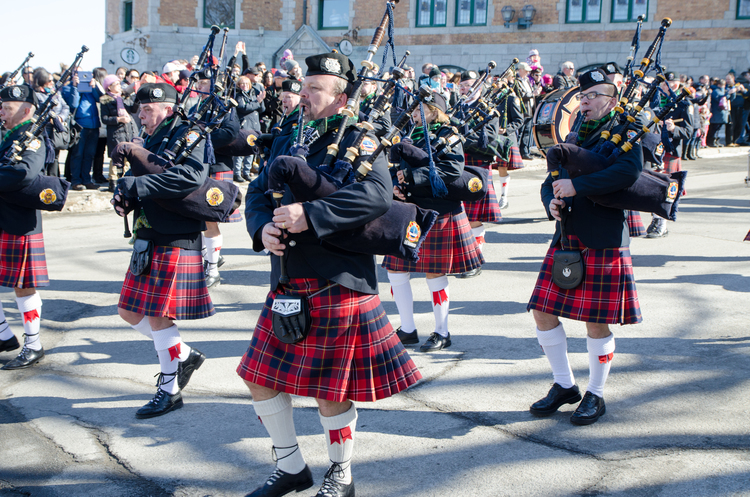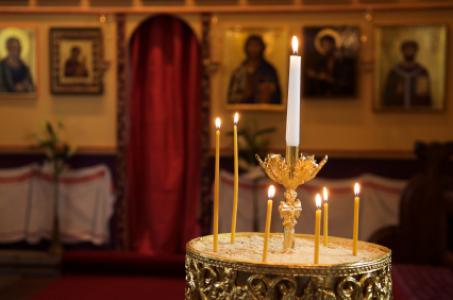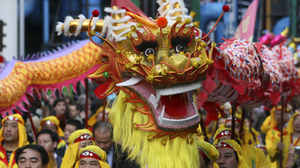
Best Comet of 2025?
C/2024 G3 (ATLAS) has already become very faintly visible to the naked eye for observers in the Southern Hemisphere.
St Patrick's Day is a public holiday in the Canadian province of Newfoundland and Labrador on the nearest Monday to March 17 each year. It remembers St Patrick, a missionary who converted many of Ireland's inhabitants to Christianity in the 5th century. His feast day also celebrates Irish culture.

The marching band of the Toronto Fire Department with bagpipes at the Quebec St. Patrick's Parade.
©iStockphoto.com/Marc Dufresne
In some cities, notably Toronto and Montreal, large scale St Patrick's Day parades are held, often on the Sunday closest to March 17. The parade in Montreal has been held every year since 1824. However, the first recorded celebration of St Patrick's Day was in 1759 by Irish soldiers serving with the British army following their conquest of part of New France, a French colony in North America. In some places there are Irish cultural events. For instance, the Irish Association of Manitoba organizes a three-day festival of Irish culture in the week of St Patrick's Day.
People who have an Irish background or enjoy Irish culture may hold Irish themed parties and serve traditional dishes, such as Colcannon or Irish stew. Colcannon is a dish of mashed potatoes mixed with kale or cabbage and Irish stew is traditionally made with lamb and root vegetables. Traditional Irish drinks include stout, a dark beer, and whiskey. Other parties may be themed around the color green. Guests may be expected to wear green clothes and only green food and drink is served.
St Patrick's Day is an official holiday in the province of Newfoundland and Labrador. It is observed by the provincial government, but post offices, stores, many schools, businesses and other organizations are open. Public transport services run on their regular timetables.
St Patrick's Day is not a public holiday in other parts of Canada. Schools, organizations, businesses, stores and post offices are open as usual. Some organizations may arrange St Patrick's Day parties, but these do not usually disrupt normal affairs. Public transport services run on their regular timetables. In cities, where parades or large public events are held, there may be some congestion or road closures.
St Patrick's Day marks the feast day and anniversary of the death of a Christian missionary known as Patrick. He was born in the year 387, probably somewhere near the present day border between Scotland and England. At the age of 16, he was captured and taken to Ireland as a slave. During this period, he became very religious and after six years he fled back to his family.
7 holidays with dark histories
Later in his life, he returned to Ireland as a missionary. He is said to have played an important role in converting the inhabitants of Ireland to Christianity and in ridding the island of snakes. However, there is no evidence that there have been any snakes in Ireland in the past 10,000 years. The “snakes” he drove out of Ireland may represent particular groups of pagans or druids. It is believed that St Patrick died on March 17 probably in the year 461 or 493 (according to different sources). St Patrick is buried under Down Cathedral in Downpatrick, County Down, and is one of the three patron saints of Ireland. The other patron saints are St Brigid of Kildare and St Columba.
St Patrick's Day celebrations were brought to Canada by Irish immigrants. The day is a bank holiday in Northern Ireland and a public holiday in the Republic of Ireland. In the rest of the United Kingdom, the United States, Australia and New Zealand, it is celebrated, but is not an official holiday.
The most widely-seen St Patrick's Day symbols are the colors green, and sometimes orange, and the shamrock. The shamrock is a symbol of Ireland and a registered trademark of the Republic of Ireland. It is the leaf of the clover plant, which grows on the ground, often among grass and an Irish Catholic symbol of the Holy Trinity. It is sometimes confused with the four-leaf clover, which is a variety of the three-leaf clover and is thought to bring good luck.
| Year | Weekday | Date | Name | Holiday Type | Area |
|---|---|---|---|---|---|
| 2020 | 月曜日 | 3月16日 (月) | St. Patrick's Day | Local Holiday | Newfoundland and Labrador |
| 2020 | 火曜日 | 3月17日 (火) | St. Patrick's Day | Observance | |
| 2021 | 月曜日 | 3月15日 (月) | St. Patrick's Day | Local Holiday | Newfoundland and Labrador |
| 2021 | 水曜日 | 3月17日 (水) | St. Patrick's Day | Observance | |
| 2022 | 月曜日 | 3月14日 (月) | St. Patrick's Day | Local Holiday | Newfoundland and Labrador |
| 2022 | 木曜日 | 3月17日 (木) | St. Patrick's Day | Observance | |
| 2023 | 金曜日 | 3月17日 (金) | St. Patrick's Day | Observance | |
| 2023 | 月曜日 | 3月20日 (月) | St. Patrick's Day | Local Holiday | Newfoundland and Labrador |
| 2024 | 日曜日 | 3月17日 (日) | St. Patrick's Day | Observance | |
| 2024 | 月曜日 | 3月18日 (月) | St. Patrick's Day | Local Holiday | Newfoundland and Labrador |
| 2025 | 月曜日 | 3月17日 (月) | St. Patrick's Day | Observance | |
| 2025 | 月曜日 | 3月17日 (月) | St. Patrick's Day | Local Holiday | Newfoundland and Labrador |
| 2026 | 月曜日 | 3月16日 (月) | St. Patrick's Day | Local Holiday | Newfoundland and Labrador |
| 2026 | 火曜日 | 3月17日 (火) | St. Patrick's Day | Observance | |
| 2027 | 月曜日 | 3月15日 (月) | St. Patrick's Day | Local Holiday | Newfoundland and Labrador |
| 2027 | 水曜日 | 3月17日 (水) | St. Patrick's Day | Observance | |
| 2028 | 金曜日 | 3月17日 (金) | St. Patrick's Day | Observance | |
| 2028 | 月曜日 | 3月20日 (月) | St. Patrick's Day | Local Holiday | Newfoundland and Labrador |
| 2029 | 土曜日 | 3月17日 (土) | St. Patrick's Day | Observance | |
| 2029 | 月曜日 | 3月19日 (月) | St. Patrick's Day | Local Holiday | Newfoundland and Labrador |
| 2030 | 日曜日 | 3月17日 (日) | St. Patrick's Day | Observance | |
| 2030 | 月曜日 | 3月18日 (月) | St. Patrick's Day | Local Holiday | Newfoundland and Labrador |
While we diligently research and update our holiday dates, some of the information in the table above may be preliminary. If you find an error, please let us know.

C/2024 G3 (ATLAS) has already become very faintly visible to the naked eye for observers in the Southern Hemisphere.

Many Orthodox Christian churches in countries such as Canada celebrate New Year’s Day on January 14 in the Gregorian calendar.

Isra and Mi'raj (Isra Me'raj, Israa and Mi'raaj, Laylat Al-Isra wa Al-Miraj, Lailat al Miraj, Night Journey and Ascension to Heaven) marks the night when the Prophet Mohammad traveled from Mecca to Jerusalem, ascended to heaven and returned.

Lunar New Year marks the first day of the New Year in the Chinese calendar.